Pilgrim Goose
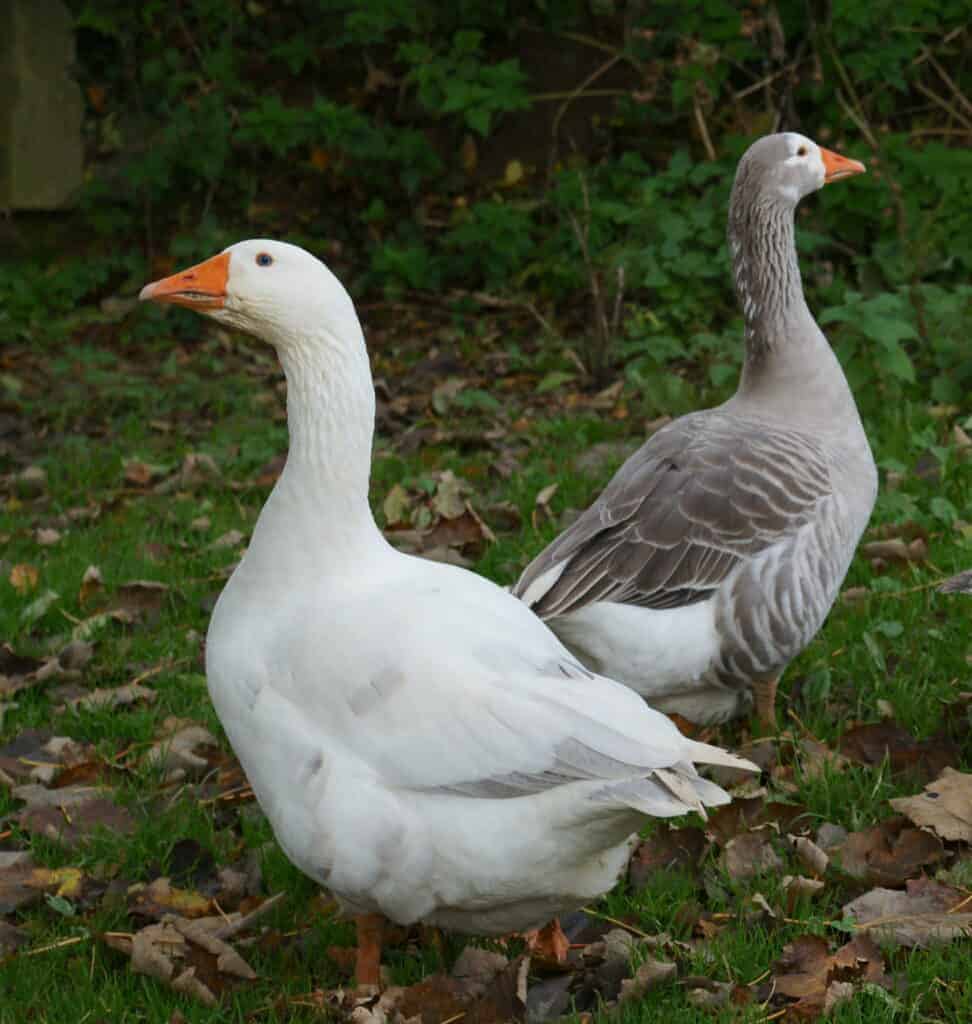
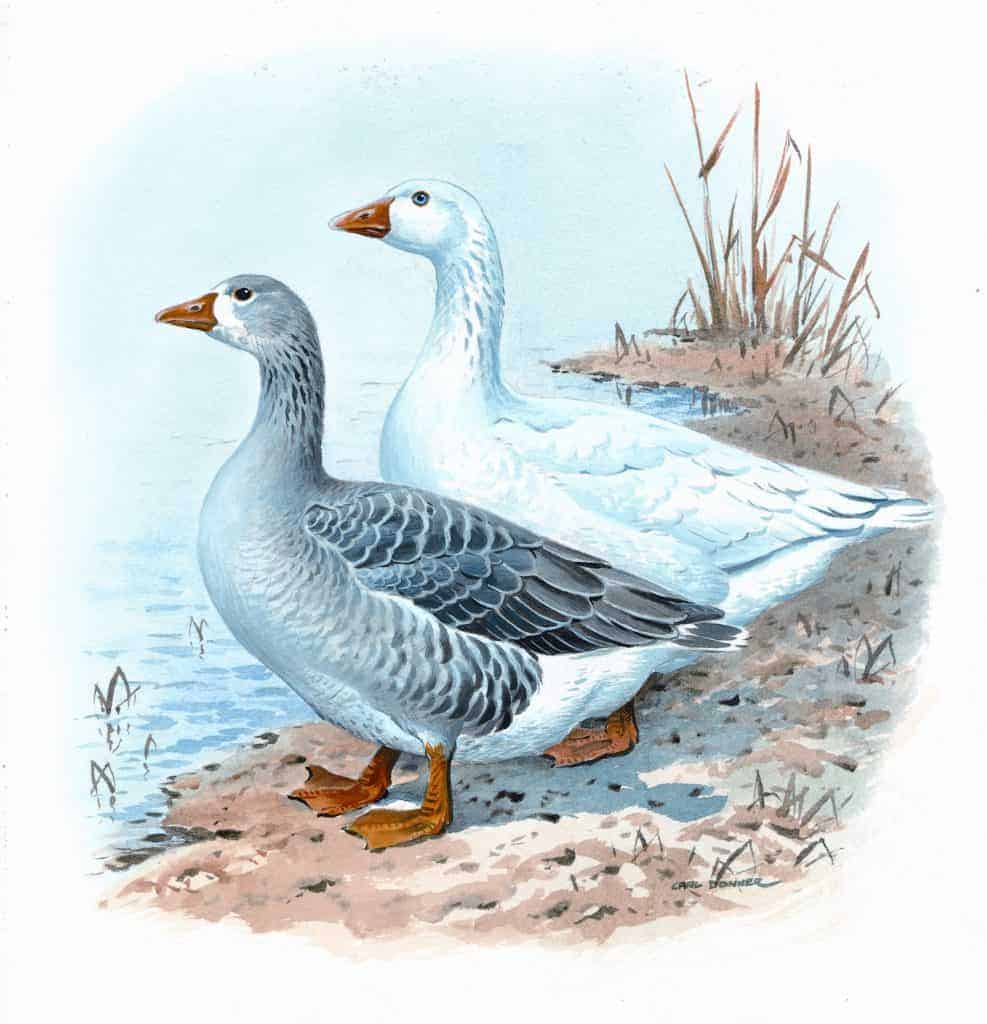
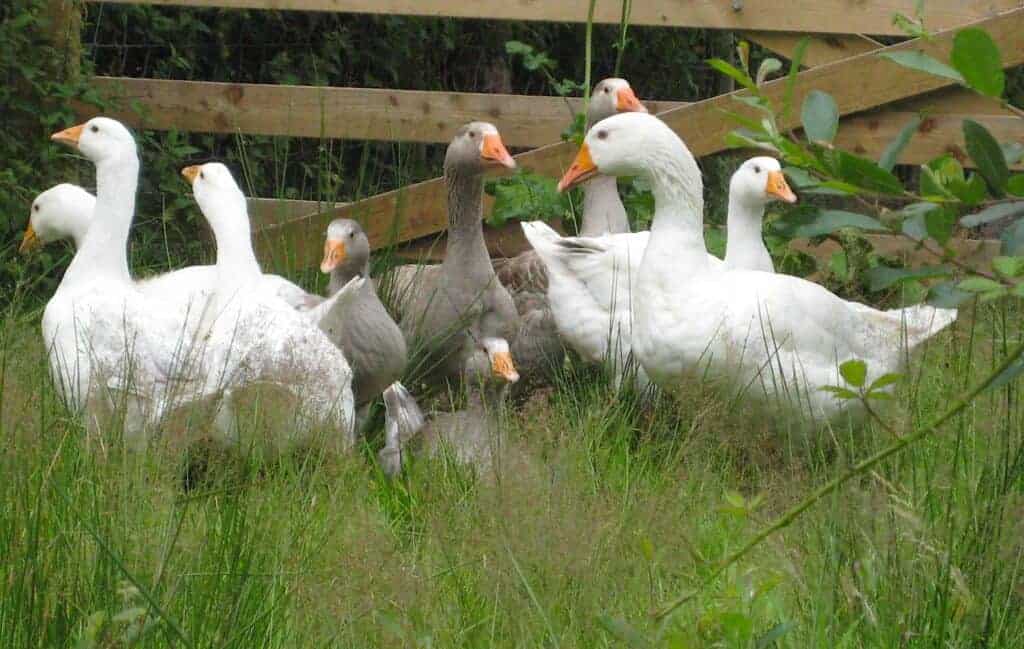
Light breed
Domesticated Greylag Goose Anser anser
The Pilgrim Goose was developed and standardised in the USA by Oscar Grow. He recognised the sex-linked colour of the breed, which can be seen even in the down colour and bill colour of the goslings on hatching. He did stress that ‘it is vitally important to employ authentic bred parent stock’, which can be difficult to source. There are people who have bred and sold what they claimed to be white female Pilgrims, but these would have to be progeny-tested and would be very unlikely to have pure offspring.
Enthusiasts for the breed in the UK are actively looking at the genetics for the Pilgrim Goose, particularly in relation to the spot gene, which has crept into many flocks. Read a note on the history of the breed here.
Ganders are white, with some traces of light grey in the back plumage, wings and tail a diagnostic feature of the breed. Geese are light grey, and have white feathers at the front of the head, the white extending around the eyes with age.
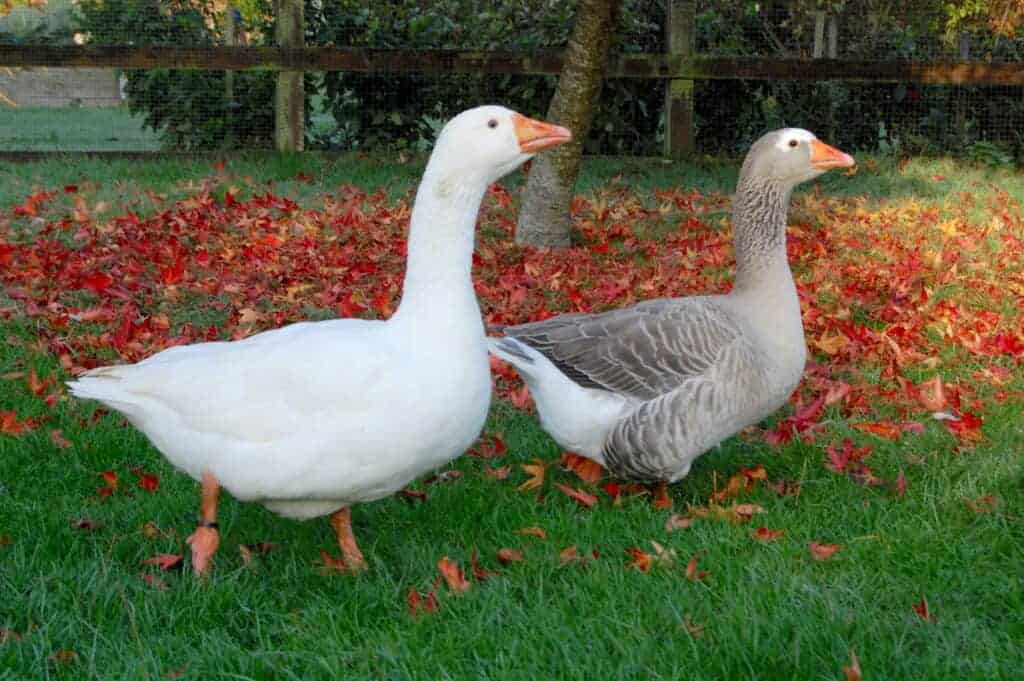
The commercial attraction and utility of these geese lies primarily in their sex-linked colour, which may easily be lost with cross-breeding.
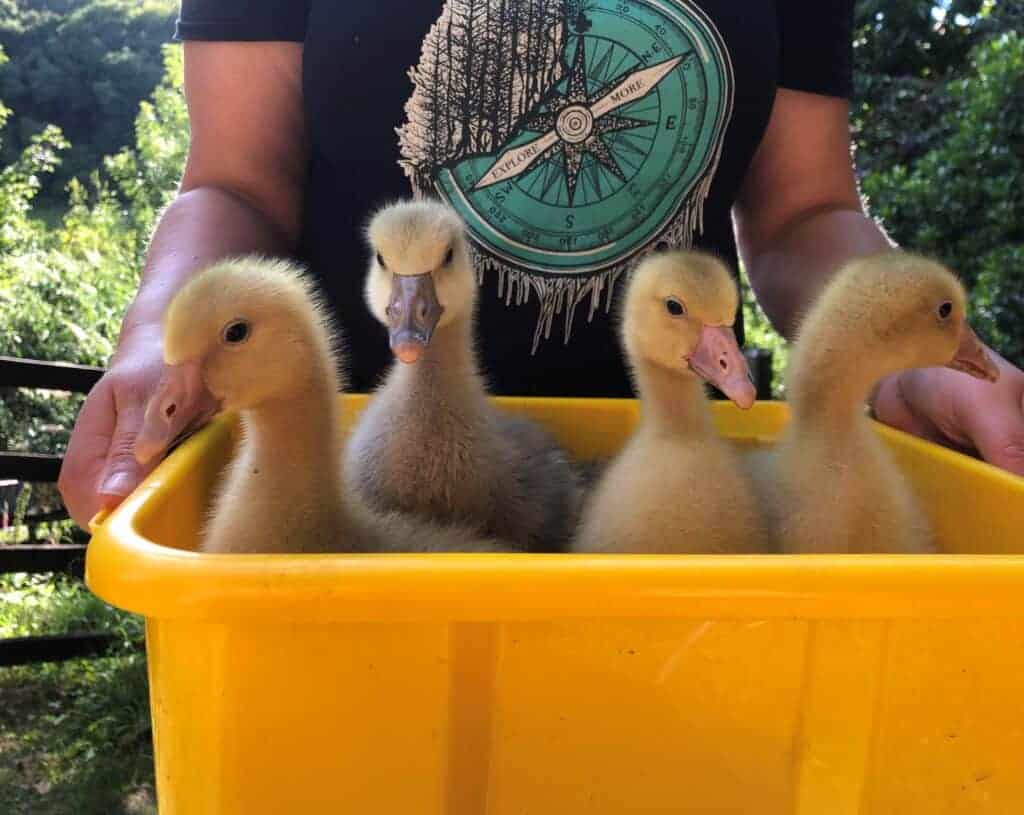
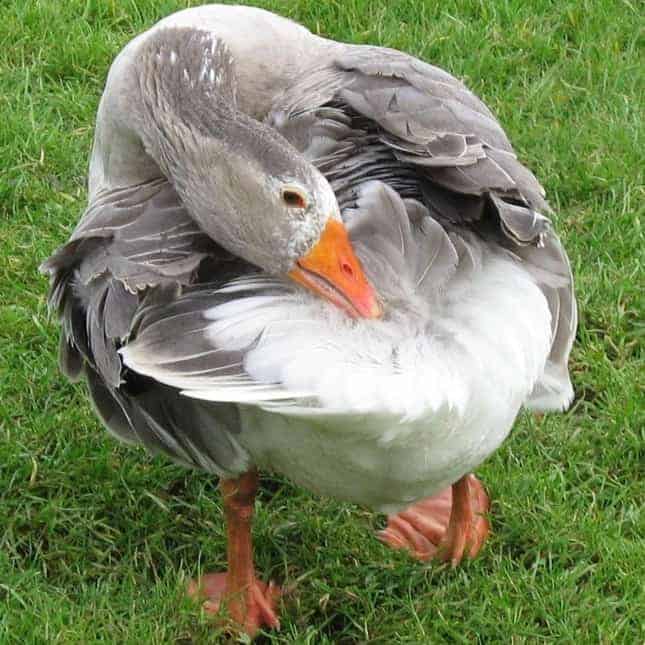
Weights vary from 6.5–8 kg in the gander and 5.5–7.5 kg in the goose. The females are average layers, often laying two clutches, like the Brecon, of about 30 eggs in total. Pilgrims are renowned for their sweet nature, which applies if they have been handled as young goslings.
FURTHER READING
http://www.aviculture-europe.nl/nummers/10e03a10.pdf
Grow, O., 1972. Modern Waterfowl Management and Breeding Guide―American Bantam Association 1972 (fifth printing 1994)
Jerome, F.N. Colour Inheritance in Geese―Can. J. Cytol. 1. 1959, pp 135-141
Jerome, F.N., 1970. Inheritance of plumage colour in domestic geese. In XIV World’s Poultry Congress. Scientific Communications. Genetics and Reproduction. Physiology and Nutrition. (pp. 73-76).
Share this page